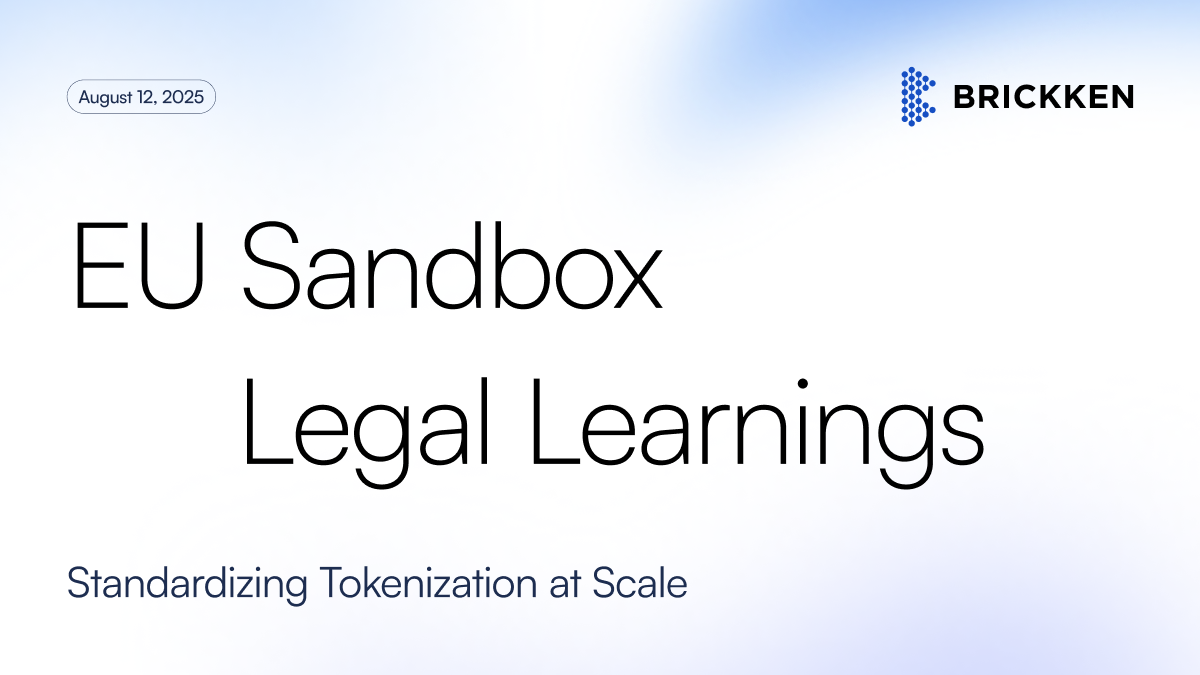The official 2025 tokenization report is now available
Access now

TL;DR
In the EU, your token’s legal label decides its future and one wrong move can stall your project before launch.
The European Blockchain Sandbox is a practical initiative from the European Commission. It is where blockchain innovators meet directly with regulators to work through real legal challenges. It is also a place where the foundations for future EU rules are quietly being shaped.
Only 20 projects are chosen each year. Selection brings direct access to national and EU regulators, tailored feedback, and the chance to influence how tokenization will be handled in Europe.
When Brickken joined the 2nd cohort, our goal was clear. We wanted to bring a real tokenization case to the table and leave with concrete, usable guidance.
Our focus was on company quotas, which are non-listed equity interests.
The problem was threefold.
Because of this, we could not simply create a “digital twin” of an existing regulated asset.
We had to design a compliant digital asset category that avoided misclassification and regulatory conflicts.
1. MiFID II or MiCAR. Never both at once.
2. How to classify a tokenized asset
Follow this order to decide which rules apply:
3. Digital twins can create complexity
A digital twin is a token that represents a real-world asset on the blockchain with exactly the same rights and obligations. If the original asset is not regulated, the token version will normally also be outside regulation.
The situation changes if the token adds new features the real asset does not have.
For example:
4. Criteria for Financial vs. Utility Tokens
Before launching, check:
5. MiCAR on Fungibility and Transferability
6. Who Counts as a Token Issuer
The issuer is the entity responsible for delivering the rights linked to the token.
Technology providers or developers may help operate the system, but that does not automatically make them the issuer.
7. Exemptions that can simplify compliance
MiCAR allows certain exceptions. Examples include:
If you are exploring tokenization:
The EU Sandbox is creating a shared approach to classifying tokenized assets. This makes it easier to launch compliant offerings in several countries at once.
The conclusion is simple. Tokenization can be done legally and effectively today, but only when compliance is built into the design from the beginning.
If your company is planning to tokenize assets, get clarity early.
Brickken can help you structure tokens that meet compliance requirements and work across EU markets.
Book a consultation with our experts